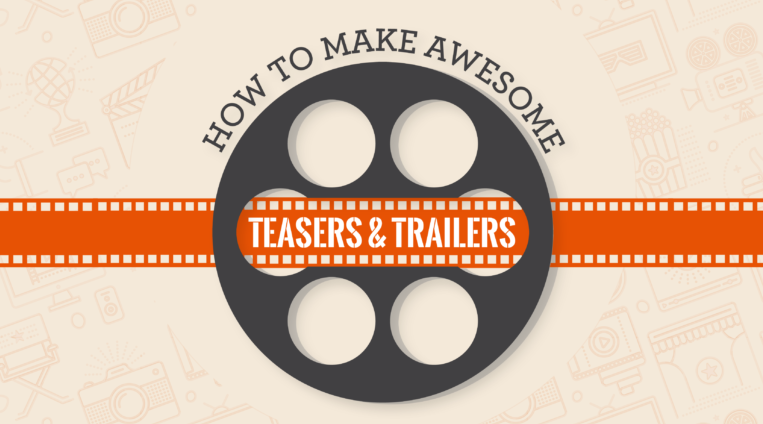Most content is crafted to satisfy its audience — to deliver all the entertainment, information, and emotion people are looking for, and hopefully a little more.
Teasers and trailers, on the other hand, are meant to do the opposite. They’re designed to grab their viewers’ attention and pique their curiosity. Successful ones give just a taste of what’s to come, so people are eager to go see the movie (or stream the album, watch the live finale, buy tickets to the show, sign up for the class, and so on).

- When can you use teasers and trailers?
Teasers and trailers aren’t limited to movies. They can play a valuable role in any video product marketing campaign: for shows, VOD websites, online classes, Roku and Vimeo channels, etc.
Your top-level goal might be traffic, leads, or even customers.
- Tips for making a trailer or teaser
It’s tempting to think of your teaser or trailer as a straightforward summary of the main content. However, your video will be engrossing if you treat it like an independent mini-story or experience.
When picking footage, opt for clips or “moments” that accomplish more than one thing. To give you an idea, you might pick a shot that’s both funny and advances the plot. Or maybe it’s simultaneously emotional and informative. Ask yourself, “What will my audience learn or feel while watching this?” If you can’t come up with two-plus answers, look for a different clip.
It’s also important to think about what will compel your viewers to take action. Your teaser or trailer will be essentially pointless if people don’t do something after watching it. Keeping that fact in mind as you plan, create, and distribute your video will focus your efforts.
- Elements of effective teasers and trailers
- An introduction to you or the product
- Visuals
- Name and logo
- Social proof
- A call-to-action
- Teasers vs. trailers
Teasers and trailers have the same primary purpose — hooking their audience and previewing the full product or experience — but there are important technical differences.
Teasers are typically 15-60 seconds long, while trailers are 1-3 minutes (sometimes even longer).
Teasers hype the product. They don’t have to be chronological. Trailers, on the other hand, typically follow the structure and format of the movie/show/class/etc. They include logistical details (such as plot, cast, director, release date, and/or price) and, for movies at least, are filmed during editing or post-production.
- How to make a teaser
First, decide what mood you want to create. Because teaser videos are so short, you can usually evoke one emotion — maybe two. Once you have an emotion in mind, it’s far easier to choose the shots, music, and text you’ll include. Keep each clip or scene fairly short — think three to 10 seconds each.
- How to make a trailer
The general concepts of teasers are the same for trailers: You still need to define a mood and select your material accordingly. But of course, the process of making a trailer is more involved. Unlike teasers, trailers follow a specific and generally unvarying structure:
- The hook: This makes the audience sit up and pay attention
- The premise: A brief section that gives viewers necessary context and fleshes out the “who, what, when, where, and why”
- The twist: Something that complicates the premise and heightens the stakes
- The montage: This part tends to be faster and higher-energy, which leads to…
- The peak: This is the most dramatic, interesting, surprising, and/or emotional part of the trailer
- The call-to-action: This brief conclusion channels the peak’s momentum into tells the audience what to do
See the full article for more details on tips for effective teasers and trailers and how to make them:
How to Create Teasers and Trailers - A Comprehensive Guide to Making Effective Teasers and Trailers (full article)